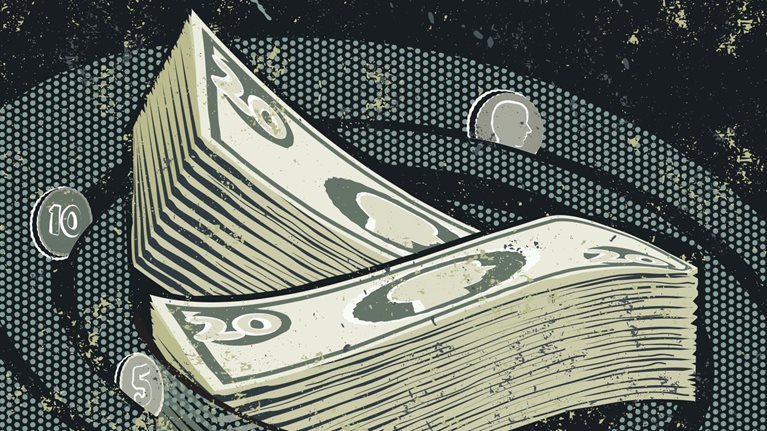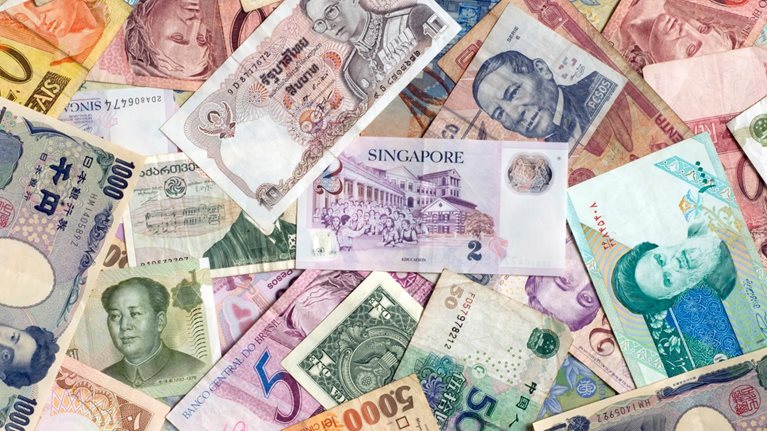With the euro surging to new highs against the dollar, many people wonder how much farther the young currency can climb and what its new strength says about the US economy's current troubles. But this is a short-term view and a one-sided focus. In the longer term, we see the euro's growing popularity in large part as a reflection of the growth, development, and vibrancy of the euro zone's financial markets.
The euro serves a rapidly expanding area, now comprising 15 countries with 318 million people—a bigger population than the US's 300 million. And these nations' combined gross domestic product last year was not much less than US GDP. The euro area's financial markets are growing to reflect this economic clout.
The McKinsey Global Institute calculates the euro area's financial markets grew by $4.2 trillion in 2006, the most recent year for which comprehensive data are available, to a total of $37.6 trillion. This boosted the euro zone's financial depth (the ratio of its financial assets to GDP) to more than 3.5 times its economic output. While this is still less than the financial depth of either the US or Britain, the euro area is gaining fast. Its financial depth has grown 5.5% annually over the last 10 years, compared with the 2.8% pace of its Anglo-Saxon rivals.
A World Awash in Euros
Two-thirds of the euro zone's asset growth in recent years has come from private debt securities and equity market capitalization—a shift for financial markets that had historically been dominated by banks. And the expanding scale of the markets is attracting ever-larger pools of capital from institutional investors and sovereign wealth funds.
Europe's common currency quietly passed another milestone last year. In April, for the first time, the value of euro notes in circulation surpassed the combined value of all the US dollars in wallets, piggy banks, and central bank vaults around the world. By Aug. 1, 2007, there were $840 billion worth of euro notes sloshing around the world, compared to $814 billion US dollars.
Skeptics may argue this just reflects Europeans' preference for cash over plastic, or the growing use of euros to fund black-market activities around the world. (Indeed, the €500 note—favored by the underworld—is the most popular euro denomination, accounting for 38% of the currency's value in circulation.) But we see this as yet another step in the euro's emergence as an international store of value, a tool of commerce, and a means of investment.
Gaining Ground as a Reserve Currency
Increasingly, the euro is becoming the currency of choice for companies around the world looking to issue international bonds and equities. By 2003, the euro had surpassed the dollar to become the most popular currency for international bond issues (although the overall size of the US bond market remains larger). And companies from Eastern Europe, India, and other emerging markets are increasingly choosing Luxembourg and other European financial markets over New York to list their public stock offerings.
As the breadth and liquidity of euro financial markets grow, the euro also is gaining ground as a reserve currency. The US dollar is still the preferred reserve currency of the world's central banks, accounting for around two-thirds of the total. But already, the euro has become the second most popular, with a 25% share of global reserves since 2003, up from 18% in 1999. This share is likely to rise as countries such as China and those in the Middle East peg their currencies' values less to the dollar and more to baskets of currencies that give the euro a prominent role.
The rise of the euro zone is making it a magnet for cross-border investing. In 2006, investors around the world purchased $8.2 trillion of financial assets in other countries, four times the amount just five years earlier. The euro zone accounts for roughly half of this growth. This reflects in equal parts the growing investments among euro zone countries, and cross-border investments between the euro zone and the rest of the world.
Good for Europe, Good for the World
There is growing concern on the other side of the Atlantic that Europe's rising financial markets spell doom for New York. But don't write off US financial markets just yet. The US remains the largest financial market in the world, with $56 trillion in financial assets at the end of 2006—one third of the global total of $167 trillion—including equities, government and corporate debt securities, and bank deposits. The US led the world in financial asset growth in 2006, reflecting strong gains in equities as well as private debt, and in 2007 it regained the lead in initial public offerings by foreign companies.
The takeoff of the euro zone's financial markets will likely prove to be a boon, rather than a threat, to the US Growth in capital markets around the world is not a zero-sum game. Stronger financial markets in Europe will benefit the Continent's businesses and its consumers—as well as US exporters and investors. Indeed, as the US markets struggle for now, observers around the world should cheer the long-term rise of Europe's financial markets as an alternate global financial strength.
Diana Farrell is the director of the McKinsey Global Institute, McKinsey's economics research arm.
This article originally ran in Businessweek.


